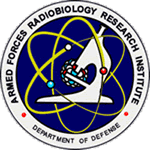
Los Alamos National Laboratory is one of the sixteen research and development laboratories of the United States Department of Energy (DOE), located a short distance northwest of Santa Fe, New Mexico, in the American southwest. Best known for its central role in helping develop the first atomic bomb, LANL is one of the world's largest and most advanced scientific institutions.
Lawrence Livermore National Laboratory (LLNL) is a federally funded research and development center in Livermore, California, United States. Originally established in 1952, the laboratory now is sponsored by the United States Department of Energy and administered privately by Lawrence Livermore National Security, LLC.

A weapon of mass destruction (WMD) is a biological, chemical, radiological, nuclear, or any other weapon that can kill or significantly harm many people or cause great damage to artificial structures, natural structures, or the biosphere. The scope and usage of the term has evolved and been disputed, often signifying more politically than technically. Originally coined in reference to aerial bombing with chemical explosives during World War II, it has later come to refer to large-scale weaponry of warfare-related technologies, such as biological, chemical, radiological, or nuclear warfare.
A dirty bomb or radiological dispersal device is a radiological weapon that combines radioactive material with conventional explosives. The purpose of the weapon is to contaminate the area around the dispersal agent/conventional explosion with radioactive material, serving primarily as an area denial device against civilians. It is not to be confused with a nuclear explosion, such as a fission bomb, which produces blast effects far in excess of what is achievable by the use of conventional explosives. Unlike the cloud of radiation from a typical fission bomb, a dirty bomb's radiation can be dispersed only within a few hundred meters or a few miles of the explosion.

The United States Department of Energy (DOE) is an executive department of the U.S. federal government that oversees U.S. national energy policy and energy production, the research and development of nuclear power, the military's nuclear weapons program, nuclear reactor production for the United States Navy, energy-related research, and energy conservation.

Nuclear terrorism refers to any person or persons detonating a nuclear weapon as an act of terrorism. Some definitions of nuclear terrorism include the sabotage of a nuclear facility and/or the detonation of a radiological device, colloquially termed a dirty bomb, but consensus is lacking. In legal terms, nuclear terrorism is an offense committed if a person unlawfully and intentionally "uses in any way radioactive material … with the intent to cause death or serious bodily injury; or with the intent to cause substantial damage to property or to the environment; or with the intent to compel a natural or legal person, an international organization or a State to do or refrain from doing an act", according to the 2005 United Nations International Convention for the Suppression of Acts of Nuclear Terrorism.

The Nevada National Security Sites, popularized as the Nevada Test Site (NTS) until 2010, is a reservation of the Department of Energy of the federal Government of the United States located in the southeastern portion of the Nye County in Nevada, about 65 mi (105 km) northwest of the city of Las Vegas.

Radiological warfare is any form of warfare involving deliberate radiation poisoning or contamination of an area with radiological sources.

A nuclear and radiation accident is defined by the International Atomic Energy Agency (IAEA) as "an event that has led to significant consequences to people, the environment or the facility." Examples include lethal effects to individuals, large radioactivity release to the environment, or a reactor core melt. The prime example of a "major nuclear accident" is one in which a reactor core is damaged and significant amounts of radioactive isotopes are released, such as in the Chernobyl disaster in 1986 and Fukushima nuclear disaster in 2011.

Chemical, biological, radiological and nuclear defense or NBC protection is protective measures taken in situations in which chemical, biological, radiological or nuclear hazards may be present. CBRN defense consists of CBRN passive protection, contamination avoidance, and weapons of mass destruction mitigation.
The Oak Ridge Institute for Science and Education (ORISE) is an asset of the U.S. Department of Energy that provides expertise in STEM workforce development, scientific and technical reviews, and the evaluation of radiation exposure and environmental contamination. Located in Oak Ridge, Tennessee, ORISE was established in 1992 to support DOE's mission by prepare the next generation of STEM professionals and by collaborating with the DOE Office of Science and other DOE programs, federal agencies, the scientific community, and industry to address scientific initiatives.
The U.S. Department of Energy/National Nuclear Security Administration's Office of Secure Transportation (OST) provides safe and secure transportation of nuclear weapons and components and special nuclear materials and conducts other missions supporting the national security of the United States of America.

The Armed Forces Radiobiology Research Institute (AFRRI) is an American triservice research laboratory in Bethesda, Maryland chartered by Congress in 1960 and formally established in 1961. It conducts research in the field of radiobiology and related matters which are essential to the operational and medical support of the U.S. Department of Defense (DoD) and the U.S. military services. AFRRI provides services and performs cooperative research with other federal and civilian agencies and institutions.

The National Museum of Nuclear Science & History is a national repository of nuclear science information chartered by the 102nd United States Congress under Public Law 102-190, and located in unincorporated Bernalillo County, New Mexico, with an Albuquerque postal address. It is adjacent to both the Albuquerque city limits and Kirtland Air Force Base.
The National Nuclear Security Administration (NNSA) is a United States federal agency responsible for safeguarding national security through the military application of nuclear science. NNSA maintains and enhances the safety, security, and effectiveness of the U.S. nuclear weapons stockpile; works to reduce the global danger from weapons of mass destruction; provides the United States Navy with safe and effective nuclear propulsion; and responds to nuclear and radiological emergencies in the United States and abroad.
The Domestic Emergency Support Team (DEST) is a rapidly deployable, interagency team of experts within the United States government, staffed from the Federal Bureau of Investigation (FBI), the Federal Emergency Management Agency (FEMA), the Department of Defense (DoD), the Department of Energy (DOE), the Department of Health and Human Services (HHS), and the Environmental Protection Agency (EPA). The DEST provides guidance to the FBI Special Agent in Charge (SAC) concerning weapons of mass destruction (WMD) threats and actual incidents/attacks.

Radiation Portal Monitors (RPMs) are passive radiation detection devices used for the screening of individuals, vehicles, cargo or other vectors for detection of illicit sources such as at borders or secure facilities. Fear of terrorist attacks with radiological weapons spurred RPM deployment for cargo scanning since 9/11, particularly in the United States.
National Urban Security Technology Laboratory is a United States government-owned, government-operated laboratory, part of the Department of Homeland Security (DHS) Science & Technology Directorate. It is located in the Federal Office Building at 201 Varick Street in the Hudson Square neighborhood, Manhattan, New York.
The Federal Protective Forces are the law enforcement agencies of the United States Department of Energy (DOE) responsible for the protection of Category I special nuclear material. Though officially classified as security police, they hold law enforcement status while engaged in the performance of official duties. Officers are equipped and trained to respond to serious incidents at Department of Energy facilities by armed adversaries and to reacquire stolen nuclear material. The FPFs have been described by the DOE as "elite fighting forces" designed to operate in "combat environments".












